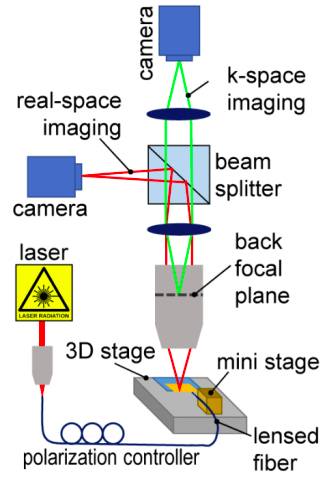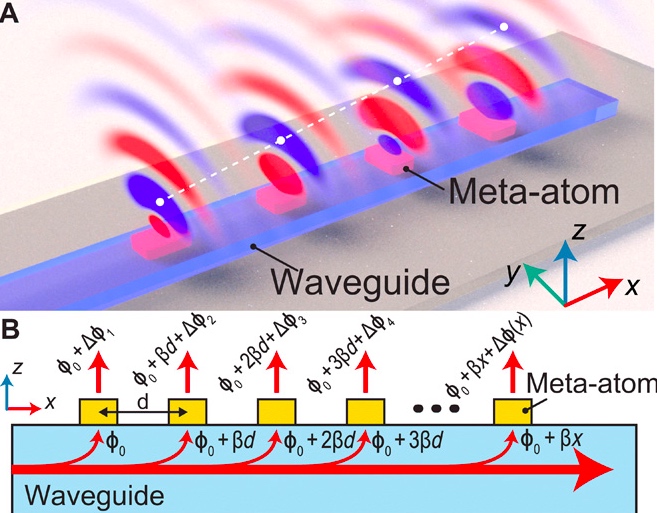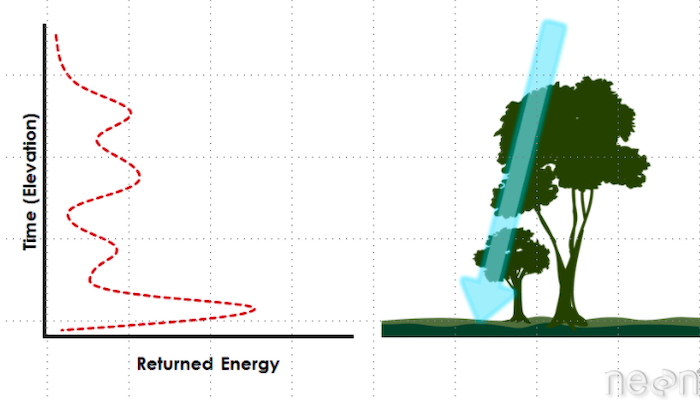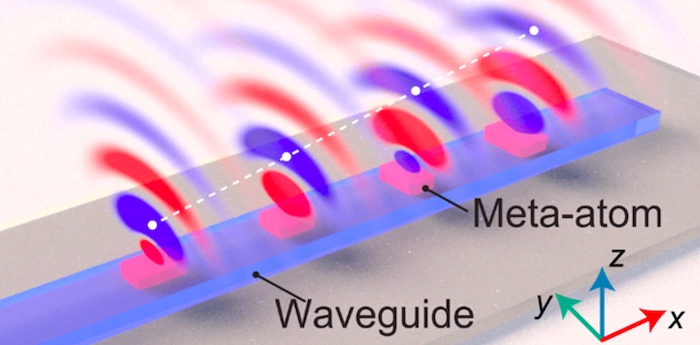Penn State University recently announced a major breakthrough in light control technology at the circuit level, creating a more viable interface between free-space wave propagation to controlled waveguide.
Research published in Science Advances details impressive achievements by bridging free-space light into a waveguide. Previously, it had been difficult to successfully couple waveguided light into free space (because of limited phase control).
The researchers have developed a hybrid architecture where subwavelength-sized meta-atoms are deposited onto the surface of a waveguide, allowing for application-specific, light-based functions to be integrated at the chip level.
The Importance of Tapered Guided-Light
Contents
Developed numerically and experimentally, the research team successfully demonstrated off-chip beam deflection and light-focusing with metasurface control. As shown below, test setups were developed for beam steering.

Diagram of off-chip beam steering and focusing. Image used courtesy of Science Advances
To focus the beam, researchers used a laser-pumped optical parametric oscillator coupled into a tapered lensed signal mode fiber, and from there into free-space.
Metasurfaces offer an optical coupling interface with built-in filtering capability, providing a two-way transformation between a free-space wavefront and single-mode (TE00) transmission.
Supplementary studies demonstrated how the researchers tested their developed metal nano-bar antenna to complete simulations using a commercially-available finite element method (FEM) solver package. The supplementary data clearly indicates control of metasurfaces for wavefront generation at various wavelengths.
Fundamentally, metasurfaces provide control over the frequency, polarization, phase, and amplitude of light as seen below:

Light-based functions, a) a bandpass, b) a notch filter, c) a high-impedance surface, and d) a narrowband “perfect absorber.” Image used courtesy of Xiao et. al
How Penn State Tapped Into Metasurfaces
The Penn State research uses accumulated phase (βx) and abrupt phase shift (ΔΦx) to overcome the previously limited phase control (π).
By using an engineered placement of the metasurfaces with full phase-shift (2π) the researchers produced waveguide-driven, free-space photon antenna patterns at specific nanometer frequencies (1550 nm) at a desired focal point.

Artist rendering of the metasurface coupled wave-guide allowing for specific light-based functions. Image used courtesy of Science Advances
There are efficiency considerations with the current design of the metasurface metal nano-bar, which have an absorption loss of 45.5%. A second design used pure dielectric and reduced the total power dissipation by ten times, primarily due to the absence of metallic components. Overall up-extraction efficiency of the metasurface interface is 9%.
The Value of Photonic Integrated Chips
According to Edmund Optics, the importance of PIC is becoming increasingly apparent as we push the limits of electron-based technologies.
Photonic technology offers enhanced bandwidth, increased speed, and lower energy requirements than equivalent RF-based technologies. Single-mode fiber, properly multiplexed, can transmit significantly higher throughputs than copper systems.
Photons generally do not collide with each other in transit and as such do not generate the heat we typically deal with in electron-based systems. This means there is less wasted heat to expel from the system, and the system is far more power-efficient.
Putting Light to Work in PIC Applications
The Penn State technology offers powerful options for integrated PIC technology with the beamforming capabilities of the metasurfaces. Metasurfaces are conducive for highly-coherent transmission and reception of photons directly on-chip.
LiDAR technology, which operates on the same principle as RADAR but with photons, uses the metric of energy intensity to characterize objects. Since the new technology offers the ability to generate specific light-based functions, engineers may, in the future, develop high-intensity beam-steered LiDAR, capable of highly-directional antenna patterns for greater detection distances.

An idealized energy intensity profile is generated based upon the return of photons from LiDAR. Greater intensity indicates increased reflections of photons to the receiver of the LiDAR. Image used courtesy of the National Ecological Observatory Network
Based on the increased PIC density afforded by the advancements, the research team sees future applications ranging from miniaturized display technologies for virtual reality and augmented reality devices to holographic projection.
The benefits of photonic integrated circuits have been well documented in research, and with the advent of this new technology combining PICs and metasurfaces, engineers can continue to push the limits of modern electronics.


